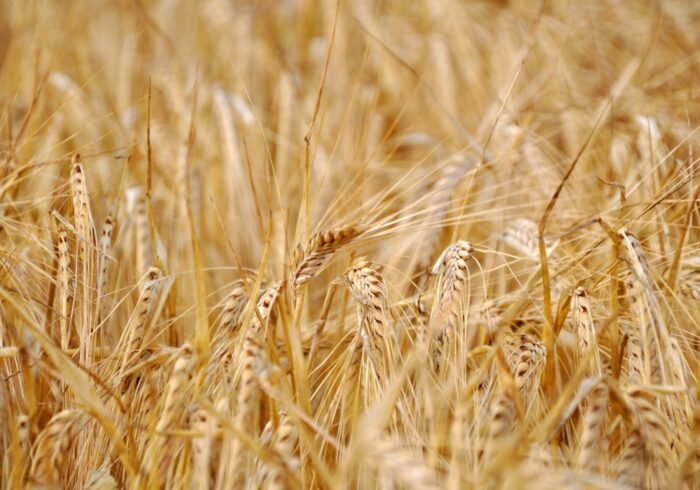The Effects of Cow Methane Emissions on Climate Change According to the Food and Agriculture Organization (FAO), livestock contributes roughly 14.5 percent of all anthropogenic greenhouse gas emissions, making cow methane emissions a major cause of global warming. Given its strength as a greenhouse gas—it traps heat in the atmosphere more than 25 times more effectively than carbon dioxide over a 100-year period—methane is the most worrisome of these emissions. A natural digestive process that takes place in ruminant stomachs, enteric fermentation is the main source of methane in cattle. Methane is released into the atmosphere by cows mainly through belching after they digest their food. These emissions have significant ramifications.
Key Takeaways
- Cow methane emissions significantly contribute to climate change, accounting for a large portion of greenhouse gas emissions.
- Methane is produced in the digestive system of cows as a byproduct of their food digestion, and it is a potent greenhouse gas with a much higher warming potential than carbon dioxide.
- Innovations in livestock farming, such as dietary adjustments and methane-reducing feed additives, are being developed to mitigate cow methane emissions.
- Government policies play a crucial role in addressing cow methane emissions, including regulations, incentives, and support for sustainable farming practices.
- Collaboration between farmers and environmental organizations is essential for implementing effective strategies to reduce cow methane emissions and promote sustainable livestock farming.
Sea levels are rising, weather patterns are becoming more severe, & ecosystems are being disrupted as global temperatures rise. The agricultural industry, in particular livestock farming, is under investigation for its role in accelerating climate change as well as its effects on the environment. As part of larger climate strategies, the Intergovernmental Panel on Climate Change (IPCC) has called for immediate action to mitigate methane emissions from cows, highlighting the urgency of this issue. Combining the need to cut greenhouse gas emissions with the demand for beef and dairy products is a difficult task that calls for creative thinking and cross-sector cooperation. It is crucial to comprehend the biological mechanisms underlying ruminant digestion in order to fully appreciate the extent of cow methane emissions.
Cows have a special stomach structure that is separated into four sections: the omasum, reticulum, abomasum, and rumen. The breakdown of fibrous plant materials is facilitated by the diverse microbial community found in the rumen. The fermentation process produces methane as a byproduct in addition to volatile fatty acids, which the cow uses as fuel. Cows burp, which releases this methane into the atmosphere.
Cows’ methane production is influenced by a number of factors, according to research, including breed, age, diet composition, & general health. For example, methane production is typically higher in diets high in fiber than in diets high in readily digestible carbohydrates. According to recent research, adding certain feed additives—like seaweed or tannins—can dramatically lower the amount of methane produced during digestion. To effectively reduce methane emissions from cattle farming, it is essential to comprehend these scientific concepts. A surge of innovations in the livestock sector are being made with the goal of lowering methane emissions from cattle.
| Country | Cow Population | Methane Emissions (kg/year) |
|---|---|---|
| United States | 94.4 million | 5,500,000,000 |
| Brazil | 212.2 million | 3,400,000,000 |
| India | 299.0 million | 2,800,000,000 |
| China | 83.5 million | 2,500,000,000 |
Dietary changes that improve feed efficiency and lower methane output are one promising strategy. For instance, researchers have discovered that methane emissions can be lowered by up to 80% when small amounts of seaweed are added to cattle feed. Seaweed’s compounds that prevent the microbes that produce methane during digestion are to blame for this. Improving herd management techniques is another creative tactic.
Precision livestock farming technologies, like data analytics and wearable sensors, let farmers keep a close eye on the behavior and health of individual animals. Farmers can increase overall herd efficiency and lower methane emissions at the same time by streamlining feeding schedules and identifying animals that might need dietary changes. Further aiding in the fight against climate change, rotational grazing techniques can also enhance pasture health & soil carbon sequestration. In order to address cow methane emissions and advance sustainable livestock farming methods, government policies are essential.
A lot of nations have started enforcing laws designed to lower greenhouse gas emissions from agriculture. A tax on agricultural emissions, for example, is part of a national policy framework that New Zealand has introduced to encourage farmers to adopt more sustainable practices. Comparably, the EU has established aggressive climate goals that include particular actions to lower livestock methane emissions.
Governments can encourage R&D projects aimed at creative ways to lower methane emissions in addition to enacting laws. Farmers who want to switch to more sustainable practices can benefit from funding initiatives that encourage the adoption of new technologies. Campaigns to raise public awareness can also inform consumers about how their food choices affect the environment, which will increase demand for livestock products that are produced sustainably. To effectively address cow methane emissions, farmers and environmental organizations must work together.
The significance of sustainability is becoming more widely acknowledged, and many farmers are keen to adopt methods that will improve their operations and the environment. In order to help farmers with their efforts to lower emissions, environmental organizations can offer funding opportunities, expertise, and important resources. An important illustration of this kind of cooperation is the Global Methane Initiative (GMI), which unites governments, stakeholders from the private sector, and non-governmental organizations to advance best practices for cutting methane emissions in a variety of industries, including agriculture.
Through training sessions, workshops, and funding opportunities, GMI assists farmers in implementing cutting-edge practices and technologies that reduce methane emissions while increasing productivity. Demand for sustainable livestock products is driven by consumer awareness, which also motivates farmers to use eco-friendly methods. Products made sustainably are becoming more and more popular as consumers learn more about how their food choices affect the environment. Due to this change in consumer behavior, many businesses have prioritized sustainability in their sourcing procedures and implemented more transparent supply chains.
Initiatives to label products as “grass-fed,” “organic,” or “sustainably raised” have gained popularity among consumers who are prepared to pay more for goods that reflect their values. This trend encourages producers to compete and lessen their environmental impact in addition to providing incentives for farmers to embrace more sustainable practices. The industry as a whole is motivated by the market to give methane reduction measures top priority as consumer demand for sustainable livestock products keeps growing. Both farmers and society at large will be significantly impacted economically and socially by addressing cow methane emissions. It is possible that adopting sustainable practices will necessitate initial expenditures for new technologies or adjustments to management techniques.
However, through increased feed efficiency and lower waste management expenses, these investments may result in long-term cost savings. Also, farmers that use eco-friendly methods may find that their market position improves as consumers demand more sustainable products. In terms of society, lowering methane emissions from cattle ranching can support larger initiatives to mitigate climate change that benefit people all over the world. We can strive toward accomplishing climate goals that shield vulnerable populations from the effects of climate change, like food insecurity and displacement from extreme weather events, by tackling greenhouse gas emissions at their source. In addition, cultivating cooperation between farmers and environmental groups can improve community relations & advance common objectives of sustainability and resilience.
Our capacity to execute promising solutions while overcoming numerous obstacles will determine the future of sustainable livestock farming. Methane emissions from cows could be significantly decreased by advances in feed additives, precision agriculture technologies, & better herd management techniques. But in order for these solutions to be widely adopted, obstacles like lack of funding, lack of access to technology or information, and reluctance to change within traditional farming communities must be removed. Also, tackling cow methane emissions needs to be a component of a comprehensive strategy that takes the entire agricultural system into account. This includes incorporating crop-livestock systems that minimize waste and improve soil health & nutrient cycling.
Also, instead of enforcing punitive measures, policymakers should make sure that regulations are created to encourage sustainable practices and help farmers rather than hinder them. In the future, cooperation between farmers, researchers, legislators, and consumers will undoubtedly be crucial to advancing sustainable livestock farming. We can strive toward a more sustainable future that strikes a balance between environmental stewardship & food production by encouraging innovation and embracing a common commitment to lowering methane emissions from cattle farming.




[…] gases that have been linked to the depletion of the ozone layer. According to a recent article on ecoguardians.shop, methane emissions from cows are also a significant contributor to greenhouse gas emissions. […]